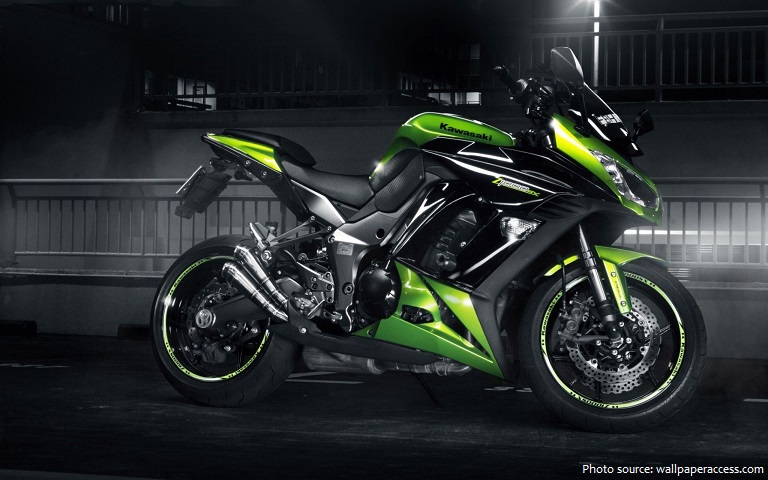
The Kawasaki Ninja is a name given to several series of Kawasaki sport bikes that started with the 1984 GPZ900R. Since then, the performance of the Ninja has become legendary, and various models have carried the Ninja name onto the road everywhere.
Kawasaki Heavy Industries trademarked a version of the word Ninja in the form of a wordmark, a stylised script, for use on “motorcycles and spare parts thereof”.
Although the Kawasaki Ninja came out in the 1984, its story technically began several decades earlier. The success of movies like The Wild One and Easy Rider cemented the ‘bad boy’ rider image in the public consciousness, especially in the US. And it led to the popularization of bobbers, choppers, and Harley-Davidson cruisers. So much so, that overseas brands, including Kawasaki, tried making direct Harley rivals.
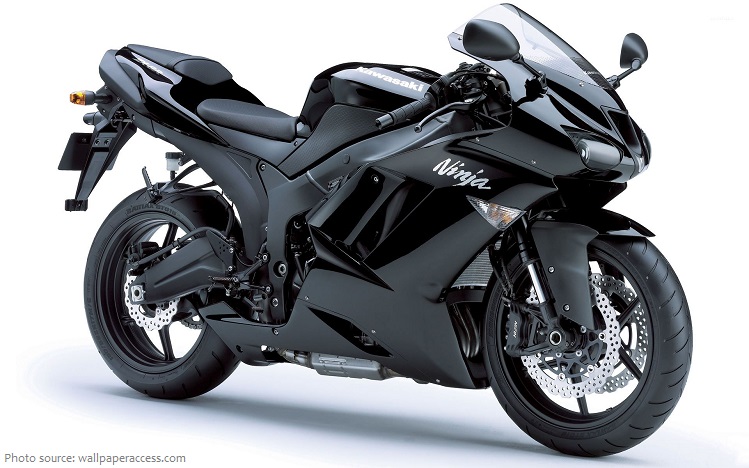
At the time, the 1984 Kawasaki Ninja 900 was “the most technically sophisticated inline-four motorcycle ever built.” It was the first production bike with an engine as a stressed member of the frame. That engine was the first production liquid-cooled 16-valve inline-four and the first inline-four with a vibration-smoothing counterbalancer. Plus, the 1984 Ninja had an anti-dive fork.
In 1985, the world witnessed the birth of the 600 Class. The Ninja 600R burst onto the scene as the first middleweight to offer a modern-designed perimeter-style frame and aerodynamic performance in the engine and chassis. Its gusto rivaled larger-displacement bikes, and it is often credited as the creator of the 600cc Supersport Class.
When the GPZ900R set and broke the record for the fastest street production bike, Kawasaki decided to maintain their record-breaking streak. In 1986, the Japanese brand released a follow-up machine, known as the GPZ1000RX. Building on the GPZ900R’s success, the new model soon claimed the fastest production motorcycle title. Though the newer model was intended to replace the GPZ900R, it didn’t. Instead, it hit the dealerships as a premium alternative to the already successful 900R.
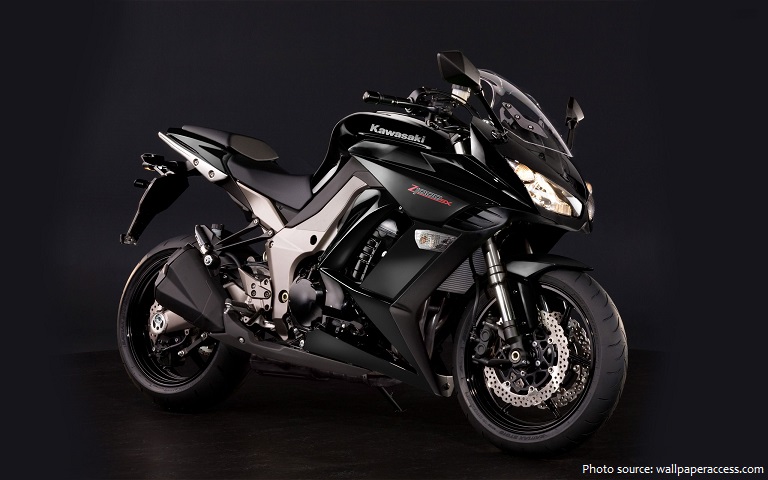
The Ninja ZX-10 guaranteed Kawasaki’s spot as the fastest motorcycle in the world in 1988. Its top speed of 270 km/h came from its 997cc engine combined with its lightweight and ultra-rigid aluminum e-BOX frame.
In 1993, to ensure its position as the world’s dominant production motorcycle, the Ninja ZX-11 gets a major model change. Upgrades include Dual Ram Air Induction, a lighter aluminium perimeter frame and larger-diameter front disc brakes. The new model continues its predecessor’s reign as the world’s fastest production motorcycle.
The Ninja ZX-9R came around in 1994 and featured an engine that captured all the best qualities of the ZXR750 but with more displacement, an aluminum frame, and twin Ram Air intake. The Kawasaki ZX-9R set a standard in the sense of balance of size, handling, and power, and took supersport high-performance to yet another level.
In 2000, the ZX-12R became the flagship model of the supersport Ninja Series and featured the first mass-produced aluminum monocoque frame and an aerodynamically crafted chassis. The advanced technology in the liquid-cooled, dual overhead camshaft, 16-valve in-line four engine gave it intense power, and the Ninja ZX-12R was the successor of the previous “King of Speed,” the ZX-11.
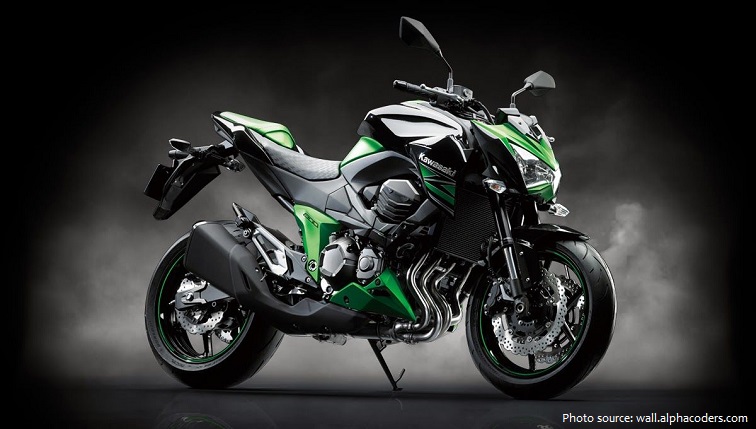
The Ninja ZX-6R and ZX-6RR was the rebirth of the supersport middleweight class in 2003. These bikes were designed to be the quickest circuit bikes in their class with the ZX-6RR made to race, while the ZX-6R was for street riding. The next few years would see the sixes made faster, smoother, and quicker, with the ability to become off of the most potent middleweights out there.
The year 2004 was the 20th anniversary of the O.G. of the Ninja family, the godfather if you will, the GPZ900R. That year, the legend was reborn with the ZX-10R. As Kawasaki’s new liter-class supersport model, the ZX-10R had an incredible power-to-weight ratio with all the power of a 1000cc supersport machine with 600cc dimensions. The ZX-10R won the title of “Master Bike” two years in a row and won many supersport shootouts around the world.
The Ninja ZX-14 arrived in 2006 as the bike with Kawasaki’s most powerful engine yet. The sculpted bodywork and aerodynamic aluminum monocoque chassis were designed to deliver the best in supersport riding. Also in 2006, Ninja 650R was born, and the ZX-10R was refined to enhance its performance on the track. The bike didn’t lose any of its maximum power but instead featured adjustments to its cornering performance and an all-new aerodynamics package.

In 2007, the Ninja ZX- 6R replaced the previous sixes with a totally new machine for the first time in a decade. It was ultra-compact with a powerful engine, mass centralization, and a rider-responsive chassis. The redesigned six was all the benefits of a lightweight small-displacement machine with all the qualities of a larger-displacement machine.
The Ninja ZX-10R gained a new engine that featured more high-rpm horsepower without the loss of low- and mid-range torque. The bike had race-developed technologies that also improved upon its frame and ergonomics. This same year, the Ninja 250R was designed for riders of all levels. It had a compact chassis that was easy to ride, A carbureted model was released in the US, while a fuel-inject model was released in Europe.
In 2009, Kawasaki builds upon the 2007 Ninja ZX-6R but with a little more track-focused performance. The weight of the six was reduced, and the chassis was fine-tuned in order to make this a machine with lighter handling. The engine provided a much stronger mid-range with precise throttle control and feel at all rpm.
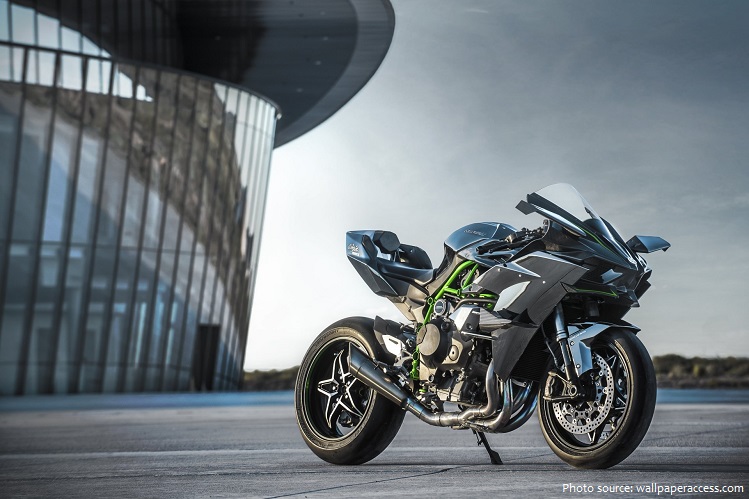
In 2011, the Ninja ZX-10R, which had multiple previous variations from 2004 onwards, was completely taken back to the drawing board. What came out of the overhaul was a supersport that would define the early 2010s, and would dominate the World SuperBike Championship in racing trim.
The Kawasaki Ninja H2 (2015) is a “supercharged supersport”-class motorcycle in the Ninja sports bike series manufactured by Kawasaki, featuring a variable-speed centrifugal supercharger. Its Ninja H2R track-only variant is the fastest and most powerful production motorcycle on the market, producing a maximum of 310 horsepower (230 kW) and 326 horsepower (243 kW) with ram-air. The H2R has 50% more power than the fastest street-legal motorcycles, while the street-legal Ninja H2 has a lower power output of 200 hp (150 kW) – 210 hp (160 kW) with ram-air.
The Ninja ZX-10R was released in 2016 to be the closest thing to a world superbike champion machine. The 2016 model was tried and tested by Kawasaki’s race-team and was designed to have even higher race-winning potential. The ten’s 998cc in-line four engine crankshaft had a lighter moment of inertia and, along with better frame geometry, the 2016 10R could handle stronger acceleration out of corners, increased performance, and sharper handling.